| Sketchley's Statistics | MRG - play stats here ABOUT LINKS |  MAIN INDEX
MAIN INDEX |
||
|---|---|---|---|---|
| LOCATIONS | TRANSLATIONS | FAQ & RULES | UPDATES | |
| By AARON SKETCHLEY (aaronsketch@HOTdelete_thisMAIL.com) | Ver 2.0 2019.08.21 |
Official Setting information is in darkgreen. Extended Universe information is in steelblue.
| Locations: Sector 1—The Core of the Unified Government |
|---|
|
|
|
|
0. Sol
See link for details.
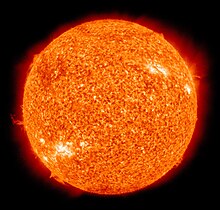

Orbit:

- Proxima Centauri undergoes occasional dramatic increases in brightness and high-energy emissions because of magnetic activity that would create large solar storms.
- Whether a planet orbiting this star could support life is disputed, since it is a red dwarf and a flare star.
(Proxima Centauri b [Alpha Centauri Cb])
Orbit:
It usually doesn't get much brighter than twilight anywhere on the surface. The brightest flares from Proxima Centauri would be the equivalent of not very strong sunlight (on Earth). It receives about 400 times more X-ray radiation, and is subject to much stronger stellar wind pressures than those experienced by the Earth.
Note: the following description has been cherry-picked from all the possible real world scenarios.
The flare activity of its parent star is not a problem, as Proxima b has a strong magnetic field. Water and an atmosphere are present, with average temperatures similar to those on Earth. A wide equatorial belt is permanently ice-free.
While the tainted atmosphere has prevented the colony from seeing explosive growth, it has experienced solid, steady growth over the decades. It's main industries are agricultural (a sizeable amount produced from the oceans) and manufacturing. There are numerous facilitiesto take refugees (if the Earth were to be attacked), as well as extensive Unified Government and Unified Forces back-up command facilities.
The vessels that compose the resupply base steadily wander around the dust belt, mining rocky objects and producing resupply and repair materials. They are attended to by a fleet of smaller transports and tugboats that transfer materials to and from Spartacus.
- 3 Factory Ship Three Star (Iovianus, Cornelia, Varinia)
- 3 Northampton class Stealth Frigate (Horatius, Albus, Vespasianus)
Proxima Centauri c (Alpha Centauri Cc)
Orbit:
The north polar region of the planet is used as the primary training and testing facility for the VF-24 Evolution and other in-development fighters (akin to Area 51).

The fourth brightest star in the night sky.
Within the frost line.
More magnetically active than α Centauri A.
Top
The 4th closest known star to Sol.
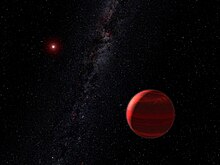
Top
Top
Top
Top
Top

The brightest star in the nighttime sky of Earth
Orbit:
• under investigation

Outshines its partner as an X-ray source.
Orbit:
• under investigation
Top
The seventh-closest star system to Earth
Orbit:
• under investigation
The two stars are of nearly equal brightness.
Orbit:
• under investigation
Top
Average 2 days between flares
Orbit:
• no low-mass companions have been discovered in orbit
• it doesn't appear to have circumstellar dust
Top
Top
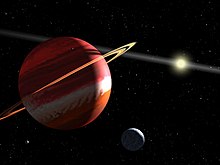

Top
Top

Top
Top
Minimal Unified Government and Unified Forces facilities in the system.
Orbit:
Orbit:
Orbit:
Top
Top
Top
Orbit:
Top
Orbit:
• Factory Colony
• Shinsei Industry Test Flight Center (ARMD Class Space Carrier)
Top
Top

Top
unconfirmed
unconfirmed
unconfirmed
Top
Top
(unconfirmed)
Top
Top
Top

Top


Top
Top
Top
Top
Top
Top
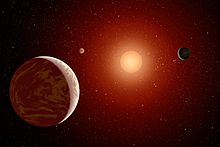
Top
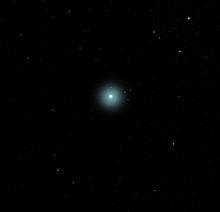
Top
Top
Top
Top
Top
Top
Top
Top
Top
Several Unified Government and Unified Forces facilities in the system
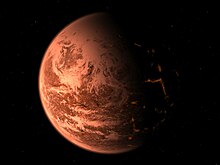

Orbit:

Top
Top
Top
Top
Top
Top
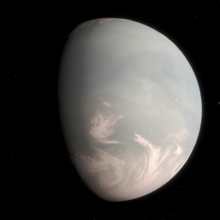
additionalINFO
Top

Top
Top
Top
https://en.wikipedia.org/wiki/Struve_2398 40 Eridani A 16.386 https://en.wikipedia.org/wiki/40_Eridani LHS 1723 17.533 https://en.wikipedia.org/wiki/LHS_1723 Gliese 251 18.204 https://en.wikipedia.org/wiki/Gliese_251 LP 816-60 18.311 https://en.wikipedia.org/wiki/LP_816-60 Gliese 205 18.5 https://en.wikipedia.org/wiki/Gliese_205 Gliese 752 A 19.286 https://en.wikipedia.org/wiki/Gliese_752 Gliese 754 19.289 https://en.wikipedia.org/wiki/Gliese_754 Gliese 588 19.298 https://en.wikipedia.org/wiki/Gliese_588 82 G. Eridani 19.582 https://en.wikipedia.org/wiki/82_G._Eridani Gliese 784 20.083 https://en.wikipedia.org/wiki/Gliese_784 Gliese 555 20.370 https://en.wikipedia.org/wiki/Gliese_555 Gliese 581 20.545 https://en.wikipedia.org/wiki/Gliese_581 Gliese 625 21.114 https://en.wikipedia.org/wiki/GJ_625 HD 219134 21.306 https://en.wikipedia.org/wiki/HR_8832 Gliese 880 22.399 https://en.wikipedia.org/wiki/Gliese_880 BD-17 588 A 22.409 find data on here: https://en.wikipedia.org/wiki/List_of_nearest_exoplanets Gliese 393 22.938 https://en.wikipedia.org/wiki/Gliese_393 Gliese 667 23.632 https://en.wikipedia.org/wiki/Gliese_667 Gliese 514 24.851 find data on here: https://en.wikipedia.org/wiki/List_of_nearest_exoplanets Fomalhaut 25.126 https://en.wikipedia.org/wiki/Fomalhaut Gliese 300 26.469 find data on here: https://en.wikipedia.org/wiki/List_of_nearest_exoplanets Gliese 686 26.612 https://en.wikipedia.org/wiki/Gliese_686 61 Virginis 27.741 https://en.wikipedia.org/wiki/61_Virginis HD 192310 28.699 https://en.wikipedia.org/wiki/HD_192310 Gliese 849 28.711 https://en.wikipedia.org/wiki/Gliese_849 Gliese 433 29.572 https://en.wikipedia.org/wiki/Gliese_433 Gliese 3325 30.109 find data on here: https://en.wikipedia.org/wiki/List_of_nearest_exoplanets HD 102365 30.374 https://en.wikipedia.org/wiki/HD_102365 Gliese 357 30.803 https://en.wikipedia.org/wiki/GJ_357 Gliese 176 30.879 https://en.wikipedia.org/wiki/Gliese_176 Gliese 479 30.912 find data on here: https://en.wikipedia.org/wiki/List_of_nearest_exoplanets Gliese 436 31.820 https://en.wikipedia.org/wiki/Gliese_436 Gliese 49 32.145 https://en.wikipedia.org/wiki/Gliese_49 see also: https://en.wikipedia.org/wiki/List_of_nearest_terrestrial_exoplanet_candidates https://en.wikipedia.org/wiki/Rogue_planet#Known_or_possible_rogue_planets https://en.wikipedia.org/wiki/List_of_potentially_habitable_exoplanets
History:
- 2028: Dancing Skulls Special Forces Team protects plant from Zentraadi guerilla land units and an aerial bomber formation.
Top
History:
- Planet used by the Unified Space Forces in 2040.
Top
History:
- 2038.05.25: Isamu Alva Dyson participates in the Planet Salvation War.
Top
Top
History:
- 2039.03.01: Isamu Alva Dyson assigned to the planet.
Top

unconfirmed
unconfirmed
Top
History:
- 2030: terraforming operation ends.
- 2031: Emigration begins.
- 2040: autonomous government established.
- 2050.12.26: Black Rainbow (terrorist group) controlled laser satellites in orbit; VF-X2 Mission 8 Battle area.
Top
Top
Top
39 (approx.) ly: Zeta Reticuli
A wide binary star system - the stars are about 3,750 AU apart. The stars revolve around each other once in over a million years.- Zeta1 Reticuli
- has 96% of the Sun's mass and 84% of the Sun's radius. - Zeta2 Reticuli
- slightly larger and more luminous than Zeta1 Reticuli, with 99% of the Sun's mass and 88% of the Sun's radius.
- orbited by a circumstellar debris disk- Gas Giant
- Acheron
A 12,201 km moon that ears a strong resemblence to Saturn's moon, Titan.
- The Ilium Mountain Range
- 2 other moons
- Acheron
A 12,201 km moon that ears a strong resemblence to Saturn's moon, Titan.
- a debris disk, analogous to the Kuiper belt, with a semi-major axis of 100 AU and a temperature of 30-40 K.
- Gas Giant
History:
- 2040: investigation begins.
- 2043: investigation of the planet ends.
- 2045: Planet Endebald passes under Unified Forces control.
Top
History:
- 2033: the Macross 4 Super Long Range Emigration Fleet finishes terraforming the planet. Emigration begins with approximately one million emigrants.
- 2050: inhabited by approximatively six million people.
Top
History:
- 2030.04: Dancing Skull Special Forces Team rescue Unified Government Chairperson Lawrence Yun Kemal, who is being held hostage by Anti-Unified Forces.
Top
A binary star system. Upsilon Andromedae is both the first multiple-planet planetary system to be discovered around a main sequence star, and the first multiple-planet system known in a multiple star system.

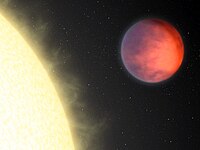
(Upsilon Andromedae b)

(Upsilon Andromedae c)

(Upsilon Andromedae d)
(Upsilon Andromedae d)
• under investigation
Top
History:
- 2029: Dancing Skull Special Forces Team intercepts forces from a warship of the Zentraadi terrorist organization Struggle at Satellite Orbit.
Top
History:
- 2036.02.13: Dispute on the planet
Top

51 Pegasi b
Top
Top
Mountainous planet
Top
Orbit:
Top
- AVFF Angel Wings (Aegis Focker was unit leader in 2048)
Top
ocean planet
Created by JJ; Star by Aaron Sketchley.
Top
Top
Orbit:
Orbit:
Orbit:

Top
History:
- 2036.08.09: Isamu Alva Dyson participates in the Hydra Civil War.
Top
Top

Top
- New Alabama Lake Unified Space Forces Replenishment Base
History:
- 2014 (before): established as a Unified Government Emigrant Planet
